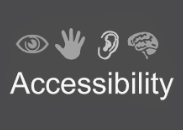Touch screen technology has rapidly replaced the conventional methods of controlling and communicating with computing platforms. Nowadays, the touch interface is present in our day to day lives, whether it is smartphones, laptops, tablets, home appliances or high-tech instruments and equipment.
To make these devices touch-enabled, OEMs typically uses one of the following basic types of touchscreen technology:
- Resistive Touch
- Projected Capacitive Touch
- Surface Acoustic Wave (SAW)
Resistive Touch
Resistive touchscreen offers the most economical and full proof touch solutions. With the resistive technology in place, touch operations can be completed with anything, like a finger, credit card, screwdriver, etc. This is the reason, you will find this particular touch system in fields where people work with gloved hands while operating instruments. But standard resistive touchscreens do not fit as demands for higher optical clarity and durability due to their traditional polyethylene surface.
However, A D Metro’s ULTRA resistive touchscreen can overcome the limitations of standard resistive touch sensors. It is made of a durable borosilicate glass surface that is resistant to water, scratches and abrasion, and impervious to most chemicals. It can be operated reliably by a finger, glove or stylus. Ultra resistive touchscreens are fairly taking over the industry as these perfectly fit in for usage in a rugged environment, defence, transportation, medical and other outdoor applications.
Projected Capacitive
A projected capacitive touchscreen is the most widely used technology that you can find in mobile phones, tablets and commercial touch displays. It offers great optical clarity and is extremely durable. Its multi-touch input operation feature is one more reason why it is extensively used for touch devices. The surface of a PCAP touchscreen is designed to be resistant to scratch, abrasion, and light moisture. The major challenge about using PCAP sensors is unreliable operation when wet as well as the cost, compared to resistive touch screens.
To manage the expenses, A D Metro offers an innovative PCAP kit that includes a patented group controller. It comes with a common controller that serves a range of screen sizes to simplify design and reduce inventory costs.
Surface Acoustic Wave (SAW)
When it comes to superior optical clarity, simple to implement, and cost-effective solution for an indoor application, OEMs usually prefer Surface Acoustic Wave (SAW) touchscreen. Given its all-glass construction with no coatings to wear out makes it quite durable and allows higher transmission of light. The panel of the SAW touchscreen is highly sensitive and respond promptly, but operations can be disrupted by a moderate amount of dirt, dust and water droplets on the touch surface. In such conditions, false touch is triggered or there may be blocked out areas on the screen.
It is the excellent optical clarity that makes SAW touch sensors- the preferred choice for applications, like ATMs, public information kiosks and other high traffic indoor environments. But for a rugged and outdoor environment, SAW touchscreens aren’t recommended.
Final Thoughts!
So this was an overview of today’s touch technologies and their usage by OEMs. With the points discussed above, it can be concluded that technologies in touchscreens differ in terms of image quality, durability, cost and their ability to handle various environmental conditions.
In case if you are looking to source touchscreen kits for your entity, you can consider checking with A D Metro. They design, manufacture, and supply innovative solutions in touchscreen sensor technology, like ULTRA resistive touchscreens, PCAP kits with group controllers. A D Metro is the leading supplier of touchscreen technology to OEMs.







